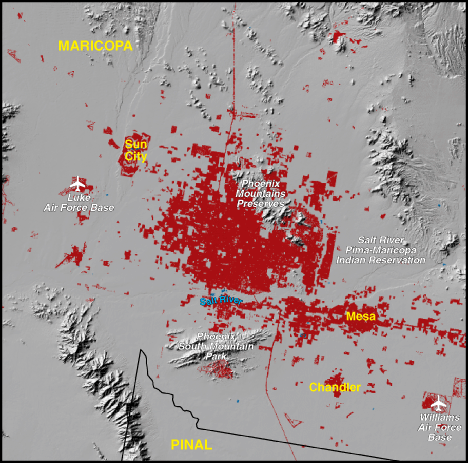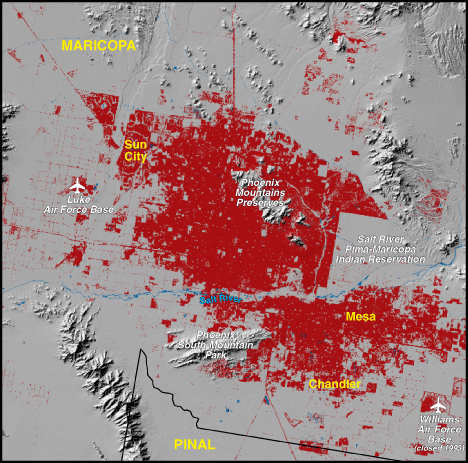Phoenix, Arizona 1973


|
1970 Population - 971,228
Includes Maricopa County. NOTE: portions of the above listed county may not be visible on the map Red areas shown as developed land 148,500 acres (232 square miles) |
Phoenix was founded in the 1870s because of local access to water. The city prospered as the trade center for the Salt River Valley, an irrigated agricultural region. In the early 1900s, the Federal Government provided more water by building Roosevelt Reservoir in the nearby mountains. Phoenix's desert climate has always attracted new residents because of perceived health benefits and warm winters, but in-migration increased after World War II. Many were retirees, who settled in places such as Sun City and Mesa. So-called "light" industries, such as electronics and aerospace engineering, replaced agriculture as the city's primary economic activity. Tourism in the "Valley of the Sun", as the Phoenix area is commonly known, became its second leading industry. |
Phoenix, Arizona 1992

|
1990 Population - 2,122,101
Includes Maricopa County. NOTE: portions of the above listed county may not be visible on the map Red areas shown as developed land 301,400 acres (471 square miles) |
Phoenix has maintained rapid and sustained growth. Its location in a wide valley allowed low-density urbanization with few limitations. Civic "progrowth" policies helped fuel an economy that, along with the area's natural amenities, attracted many new residents. Phoenix's growth has come at a price, however. Need for more water, much of it now coming from the Colorado River, has created regional and sectorial conflicts, such as between Arizona and its neighboring States and between agricultural and urban land uses. Demand for electricity, especially for air conditioning, continues to escalate. An abundance of motor vehicles, but few freeways, has led to increased air pollution and traffic congestion. |